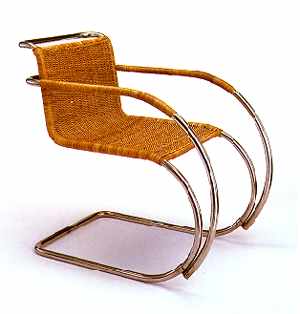
 |
||||||||
|
|
|||
 |
Ludwig Mies van der Rohe 1886-1969 Germany
Born in Aachen, Ludwig Mies van der Rohe initially trained as a builder and later worked as a draftsman of stucco ornaments for a local architectural office. In 1905, he moved to Berlin and studied under Bruno Paul, designing his first buildning in 1907. In 1908, Mies joined Peter Behrens' architectural practice, staying there until 1911. In 1919, he joined the revolutionary Novembergruppe, promoting Modernism throught his architectural proposals. In 1926, he was made vice-president of the Deutscher Werkbund and a year later, organised the Stuttgart Exhibition. He designed the German pavilion for the 1929 Barcelona Exhibition and the Tugendhat house, Brno, Czechoslovakia, between 1929 and 1930. In 1931, he exhibited at the Berlin Buildning Exhibition and granted Thonet-Mundus exclusive marketing rights for chair designs. In 1930, he became the last director of the Bauhaus. In 1938, he emigrated to America and took up teaching post at the Armour Institute (now Illinois Institute of Technology) in Chicago. |
||
|
Other designers at contemporary: |
|||